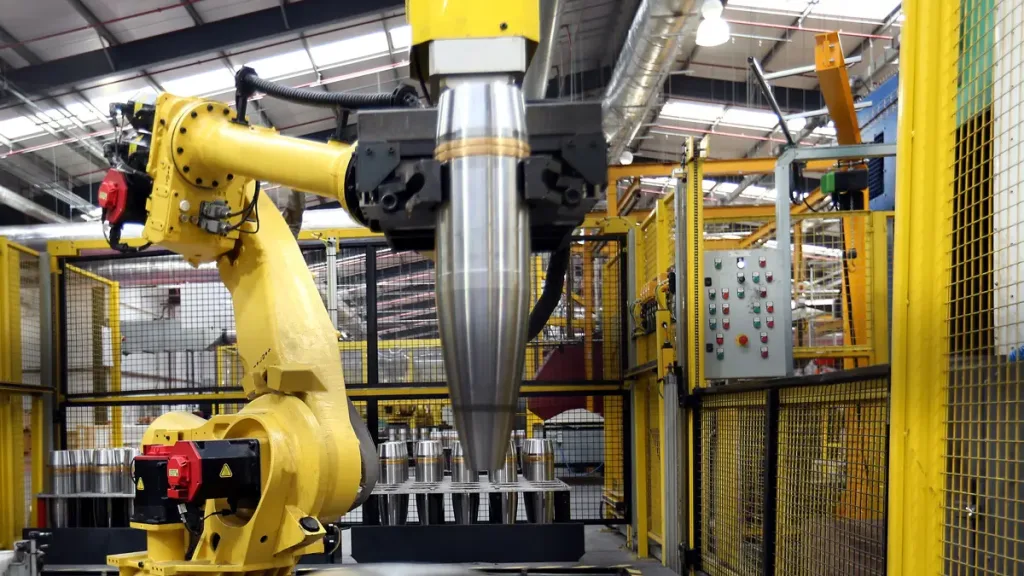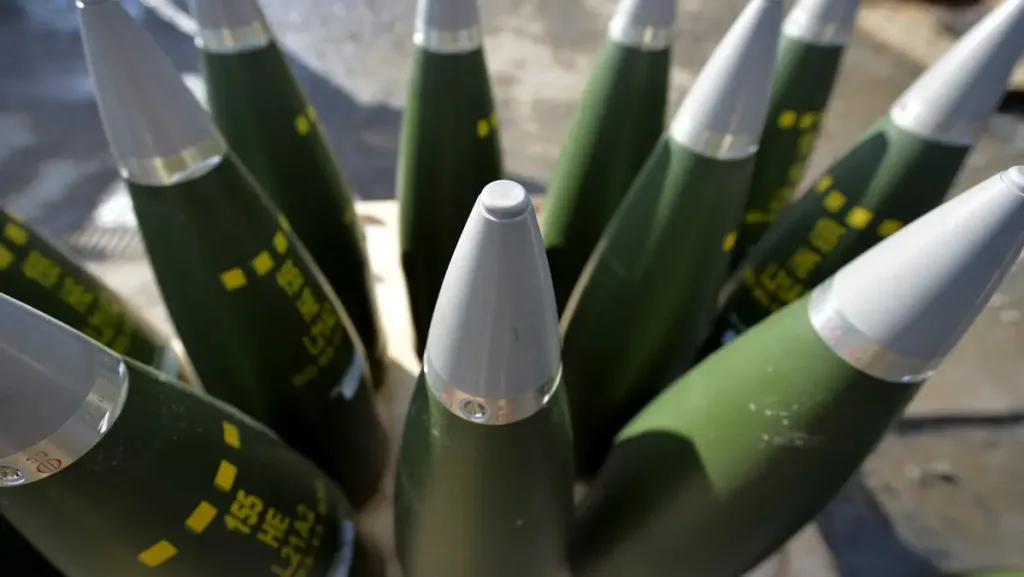Has BAE revolutionised the UK’s ammunition production?
BAE has potentially revolutionised the UK’s ammunition production by developing technology enabling the company to synthesise propellants and explosives without nitrocellulose and nitroglycerine, two key ingredients in the production of 155 mm artillery ammunition, according to a 21st April press release.
The new process has demonstrated the ability to produce explosives in small nodes, potentially removing the need for a large-scale explosive factory, according to the press release. The “propellant formulation and associated manufacturing process have been demonstrated across a wide range of products from small arms to large calibre munitions,” it adds.
The process is described as continuous flow, which means that it is working continuously with less explosive material in production at any one time compared with conventional production. The company anticipates the first industrial production of the explosives and propellants at the end of 2026, as well as the ability to meet the UK MoD’s requirements as well as its export requirements through synthetic production.
BAE is currently working to expand production at its ammunition facilities in the UK, with the goal of reaching a 16-fold increase on its pre-2022 production. This is backed by a £150 million ($187 mln/€175 mln) investment in expanding its facilities. The development process for the synthesised explosives has been funded with £8.5 million in R&D funds over the past five years, which was invested in novel manufacturing methods.
The process is likely connected to BAE’s Next Generation Adaptable Ammunition (NGAA), which has been developed to increase the efficiency of artillery ammunition production by making much of the process modular and reducing supply chain dependencies. The NGAA process includes revised methods for explosive mixing, resulting in a significant reduction in the time it takes to mix explosives for artillery ammunition, the company states. “We have invested in innovative manufacturing methods, which will provide efficient and cost-effective additional sources of explosives to both the UK and our NATO allies. This will ease the supply chain constraints that we experience during times of high demand,” the company’s webpage on NGAA states.
Tech explainer

A 105 mm artillery shell on an automated production line. Ammunition production has a challenging supply chain with multiple raw materials that can be difficult to replace. Credit: BAE Systems.
There’s a lot going on here, and a lot to unpack, we can start with the two key elements of this announcement; synthesising explosives and propellant, and the continuous flow manufacturing.
Synthesising explosives and propellant: Nitrocellulose is a key component in the production of propellants for artillery, medium calibre weapons and small arms. It is made by nitrating cotton pulp, which is essentially made by treating harvested cotton fibres or wood pulp. During this process, the cotton fibres are treated with a mixture of nitric acid and sulphuric acid and then dehydrated. The whole process produces an incredibly energetic material that burns quickly at a high temperature, this product is sometimes known as guncotton, which can then be used to manufacture propellants for artillery shells. Less energetic nitrocellulose is also used in paint and varnish, and cotton of course has many different uses, producing a contested and busy supply chain.
As the Ukraine war entered its second year, all of Europe, Russia, and the US had kick-started increased production of artillery ammunition. This meant that all of these countries started pulling on what was essentially a fairly limited supply of cotton pulp and nitrocellulose production, leading in part to the long time-delay in increased production. The amount of cotton that is available is shaped in no small part by the amount of cotton that gets planted each season, which is in turn shaped by market demand. This means that it can be difficult for nitrocellulose producers to rapidly increase supply as there may not be enough cotton pulp available on the market.
Nitroglycerine also starts with nitric acid and sulphuric acid to which glycerol is added, the nitric acid then replaces the hydrogen atoms in the glycerol, before some additional processing leads to the end product. The resultant product is used in explosives and smokeless powders. BAE has led on several explosives development projects in the past, and designed IMX-101, an insensitive explosive expected to replace traditional forms like RDX in US service.
Continuous flow processing: Continuous flow processing, also known as continuous manufacturing or continuous flow production, is a method of manufacturing where materials or products move through a production line in a constant and uninterrupted manner. Instead of processing items in batches that move from one stage to the next, each unit progresses individually and continuously through all the necessary steps until the final product is completed. Think of it like a constant stream rather than a series of stops and starts. This approach aims to minimise waiting times, reduce work-in-progress inventory, and increase overall efficiency. A good example is the production of cars, which typically pass along a production line having components and parts added until they are finished.
In this application, continuous flow processing indicates that the chemicals used in BAE’s new process are continuously pumped into a reactor vessel and passed through the machinery involved until a finished explosive or propellant is produced at the other end. Contrast this with traditional nitrocellulose production, which has multiple steps and breaks in the production process from the first nitrating through to drying and preparing the nitrocellulose ready for use.
Calibre comment

155 mm ammunition from BAE Systems. BAE is working to revamp the UK’s ammunition production through the Next Generation Adaptable Ammunition process. Credit: BAE Systems.
The press release indicates that BAE no longer needs nitrocellulose or nitroglycerine for the production of ammunition. It follows that the company can produce propellants and explosives from other materials or chemicals and do so continuously, potentially eliminating the UK’s dependence on imports of materials from a congested, contested, and bottlenecked supply chain. Munitions production and stocks have been a known vulnerability for European forces in particular for some time, but the war in Ukraine threw those vulnerabilities into stark relief. For instance, the US exhausted its strategic stockpiles of munitions like Hellfire guided missiles and Excalibur guided artillery rounds during the fight against ISIS in 2016. Munitions production has relied on small batch orders since the end of the Cold War, and the supply chains have adapted to meet that demand signal, reducing the ability to rapidly scale production. This is leading many European states like Estonia, Denmark, and Poland to establish their own domestic production and increase output, however, without changes to what they are doing, they will inevitably come to rely on the same supply changes as everyone else.
This means that if BAE can procure the chemicals and materials it needs from the UK or Europe without falling into other supply chain bottlenecks, then this announcement does indeed indicate a revolution in munitions production for the UK. Especially if it is able to meet the stated goal of a 16-fold increase in munitions production.
By Sam Cranny-Evans, published on 28th April, 2025.

Sign Up for Updates!
Get insider news, tips, and updates. No spam, just the good stuff!






